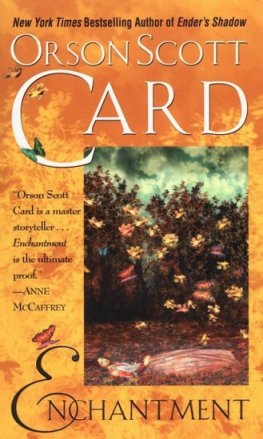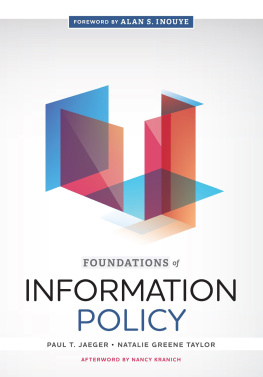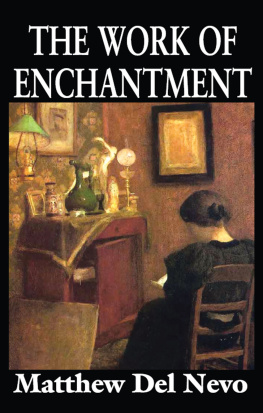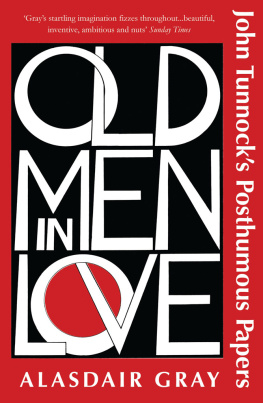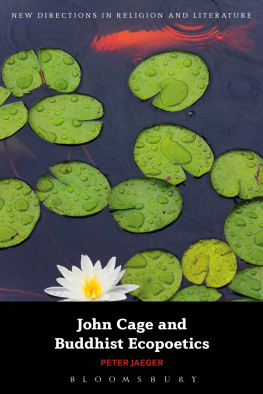Jaeger - Enchantment: on charisma and the sublime in the arts of the West
Here you can read online Jaeger - Enchantment: on charisma and the sublime in the arts of the West full text of the book (entire story) in english for free. Download pdf and epub, get meaning, cover and reviews about this ebook. City: Philadelphia, year: 2012, publisher: University of Pennsylvania Press, genre: Science. Description of the work, (preface) as well as reviews are available. Best literature library LitArk.com created for fans of good reading and offers a wide selection of genres:
Romance novel
Science fiction
Adventure
Detective
Science
History
Home and family
Prose
Art
Politics
Computer
Non-fiction
Religion
Business
Children
Humor
Choose a favorite category and find really read worthwhile books. Enjoy immersion in the world of imagination, feel the emotions of the characters or learn something new for yourself, make an fascinating discovery.

- Book:Enchantment: on charisma and the sublime in the arts of the West
- Author:
- Publisher:University of Pennsylvania Press
- Genre:
- Year:2012
- City:Philadelphia
- Rating:5 / 5
- Favourites:Add to favourites
- Your mark:
- 100
- 1
- 2
- 3
- 4
- 5
Enchantment: on charisma and the sublime in the arts of the West: summary, description and annotation
We offer to read an annotation, description, summary or preface (depends on what the author of the book "Enchantment: on charisma and the sublime in the arts of the West" wrote himself). If you haven't found the necessary information about the book — write in the comments, we will try to find it.
Jaeger: author's other books
Who wrote Enchantment: on charisma and the sublime in the arts of the West? Find out the surname, the name of the author of the book and a list of all author's works by series.
Enchantment: on charisma and the sublime in the arts of the West — read online for free the complete book (whole text) full work
Below is the text of the book, divided by pages. System saving the place of the last page read, allows you to conveniently read the book "Enchantment: on charisma and the sublime in the arts of the West" online for free, without having to search again every time where you left off. Put a bookmark, and you can go to the page where you finished reading at any time.
Font size:
Interval:
Bookmark:
ENCHANTMENT

On Charisma and the Sublime
in the Arts of the West
C. Stephen Jaeger

A volume in the Haney Foundation Series, established in 1961
with the generous support of Dr. John Louis Haney.
Copyright 2012 University of Pennsylvania Press
All rights reserved. Except for brief quotations used for purposes of review or scholarly citation, none of this book may be reproduced in any form by any means without written permission from the publisher.
Published by
University of Pennsylvania Press
Philadelphia, Pennsylvania 19104-4112
www.upenn.edu/pennpress
Printed in the United States of America
on acid-free paper
10 9 8 7 6 5 4 3 2 1
Library of Congress Cataloging-in-Publication Data
Jaeger, C. Stephen.
Enchantment : on charisma and the sublime in the arts of the
West / C. Stephen Jaeger.1st ed.
p. cm. (Haney Foundation series)
Includes bibliographical references and index.
ISBN 978-0-8122-4329-1 (hardcover : alk. paper)
1. ArtsHistory and criticism. 2. Charisma (Personality trait) in literature. 3. Charisma (Personality trait) in mass media. 4. Sublime, The, in art. 5. Sublime, The, in literature. I. Title.
II. Series: Haney Foundation series.
NX620.J34 2012
700.1dc23
2011030835
This book is dedicated to
Hannah and Zoe Jaeger
O Shahrazad, that was a noble and admirable story! O wise and subtle one, you have taught me many lessons... I have listened to you for a thousand nights and one night, and how my soul is changed and joyful, it beats with an appetite for life.
King Shahryar to his wife, Shahrazad, as she finishes
the last story of the Thousand and One Nights
Utilitarian economists, skeletons of schoolmasters, Commissioners of Fact, genteel and used-up infidels, gabblers of many little dog-eared creeds, the poor you will have always with you. Cultivate in them, while there is yet time, the utmost graces of the fancies and affections to adorn their lives so much in need of ornament; or, in the day of your triumph, when romance is utterly driven out of their souls, and they and a bare existence stand face to face, Reality will take a wolfish turn, and make an end of you!
... The dreams of childhoodits airy fables; its graceful, beautiful, humane, impossible adornments of the world beyond: so good to be believed in once, so good to be remembered when outgrown, for then the least among them rises to the stature of a great Charity in the heart, suffering little children to come into the midst of it.
Charles Dickens, Hard Times


The book on my desk, in the Loeb Classical Library series, puts together three works: Aristotles Poetics, Longinuss On the Sublime, and Demetriuss On Style. The first two have a claim to a greater influence on theory of representation in the West than any others before or since. We might say, what Aristotle and Plato are for philosophy, Aristotle and Longinus are for aesthetic thought, two opposed poles, from which theory of representation evolves.
The empiricist Aristotle described genres, aspects of style, and structure, and he gave the term mimesis as lengthy an explanation as it would receive in antiquitywithout clarifying it, at least for modern readers. Later commentators could take up imitation, extend it to imitation of nature, or imitation of reality or re-presentation of reality, and so make realism the anchor of representation, holding the things tethered to it at varying lengths and radii, but always returning to that which held it in water however shallow, deep, or unfathomable.
Aristotle explained mimesis as the imitation of a human action and laid out three modes of it: Mimetic artists... can represent people better than our normal level, worse than it, or much the same.
If the treatise On the Sublime (Peri hypsous) had had anything like the reception of Aristotles Poetics, literary theory might have concentrated more on the ways poetry elevated its objects above our normal level and raised reality beyond the laws of nature while persuading the reader that it had not left them altogether. Its supposed author, Longinus, is the theorist of the high style.
This book (that is, the one that youre reading) is about an aspect of the sublime style, which I will call charismatic art. This mode also conceals realityor at least clothes itin brilliance; it diminishes the reasoning faculty, speaks to the imagination, and exercises an enthralling effect on the reader or viewer. A closer discussion of the sublime, the charismatic, and the mimetic follows in the first chapter. Charisma of art is one particular aspect of the high style in various media. Mimesis is a concern mainly as a difficult other, which plays into sublime and charismatic art in many ways, not always adversarial.
The separation and polarization of a mimetic and a hypermimetic mode of art is a given of theory that I will argue against in virtually every section of this book. Mimesis has become the dominant concept in aesthetics in part because of the rationalist anchoring of representation in reality, but it owes a great deal to its prominence in one of the most brilliant and influential works of literary criticism, Erich Auerbachs Mimesis. This book wrote mimesis and representation of reality into the history of Western literature. By tying art to the real, Auerbach at the same time created, or opened the door to, a large project of investigating Western art and literature in their sublime, charismatic, hyperreal aspects. In the commentaries that follow here I pursue charismatic elements wherever I find them; I draw on literature, painting, sculpture, and film. Auerbach limited himself to literature, and that narrowing and sharpening of the relevant material is an advantage my study does not have. I am acutely aware of its vulnerability to the readings of experts in the various fields that my chapters venture into. I can only hope for a benevolent reading that pardons individual faults and failures to consult all the relevant specialized literature by way of favoring a larger picture. What induced me to spread my study across so many genres of representation is that I saw common features of enchantment through charismatic effects shared across a variety of forms of representation, a variety broader than the (generally) high art and literature on which my commentaries focus. The integrity of a work on such a range of media depends on the limitations inherent in the working of charisma: the effects are limited; the causes widely varied. If any or all media offer a kind of art that exercises beguiling effects clearly parallel to the working of charismatic political and religious figures, then those effects deserve close study across the entire range of media that produce them, all the more so since there is often so little separating enchantment from seduction and exaltation from deception.
Throughout this work I focus on the congruence of experience and representation. The distinction between life and art is weakened in the eyes of the beholder when either a real person or a representation possesses charisma. The ability of a living person to sustain charismatic effects in an audience or collection of fans, worshippers, or devotees depends on his or her ability to enter or appear to enter the condition of a work of art; and conversely the work of art that does not convey the sense of living a heightened form of life and promising to transport the viewer into that world cannot produce charismatic effects. The self as a work of art is a well-known topic, especially of court life and courtly self-fashioning, which calls on a sophisticated artistry of the self; the work of art as heightened life is also well known. The common effect of art as life and life as art is addressed in virtually every chapter.
Next pageFont size:
Interval:
Bookmark:
Similar books «Enchantment: on charisma and the sublime in the arts of the West»
Look at similar books to Enchantment: on charisma and the sublime in the arts of the West. We have selected literature similar in name and meaning in the hope of providing readers with more options to find new, interesting, not yet read works.
Discussion, reviews of the book Enchantment: on charisma and the sublime in the arts of the West and just readers' own opinions. Leave your comments, write what you think about the work, its meaning or the main characters. Specify what exactly you liked and what you didn't like, and why you think so.


![Bear Grills - The Hunt [=The Devil's Sanctuary]](/uploads/posts/book/843506/thumbs/bear-grills-the-hunt-the-devil-s-sanctuary.jpg)
